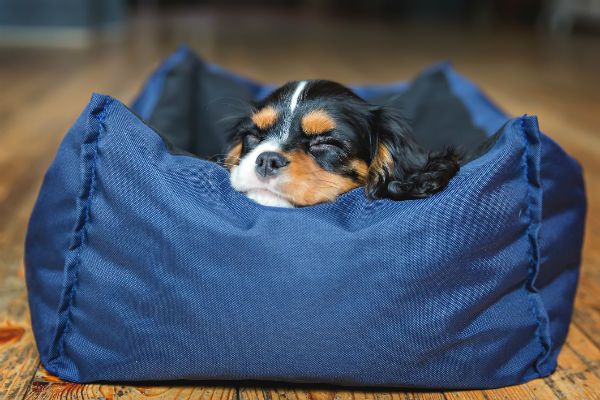Young children and puppies have a lot in common: they’re both curious, excitable, impulsive, and, for the most part, endearing. If you follow some sensible guidelines when introducing your children to the new puppy, you can take the first steps toward creating a life-long bond.
Your puppy is experiencing many new people and things when you first bring him home from the breeder. He has to adjust to being away from his mother and littermates; it’s a completely new environment for him. And, as excited as your kids are to play with their new housemate, the introduction should not be a free-for-all.
Let the Puppy “Introduce” Himself
If possible, introduce the children to the puppy one at a time. This can be difficult with excited children who just want to rush to cuddle and play with their new dog. But help them understand that young puppies may be somewhat fearful and anxious and need a gentle, patient approach.
Supervise All Dog-Kid Interactions
Both are learning how to behave around the other. You don’t want kids getting rough-and-tumble with the puppy, nor do you want their behavior to provoke fear or an aggressive reaction in the dog. Any kind of negative interaction at this point can make the puppy feel unsafe or create fear in a young child.

Take Your Kids Along When You Walk the Puppy
Children under the age of 10 or so are too young to walk the puppy alone, but they can certainly “help” you on walks. It’s also a great opportunity for them to start to learn about holding a leash, stopping for puppy bathroom breaks, and observing some of the outdoor behaviors that are common to the puppy’s breed.
Let Children Help You Take Care of the Puppy
Everyone in the family should be involved in canine care, and even little children can have jobs to do, like bringing you the food bowl to fill or getting the leash when it’s walk time. Older children can feed the puppy, help clean up after him, and walk him. This teaches kids about responsibility, while also helping you with dog care.

Children Can Participate in Training
The kids learn the proper way to issue commands or corrections, and your puppy learns the behavior you expect from him. Everybody learns best by doing.
Quiet Time
Teach children that puppies sometimes need some quiet time, just as they do. If the puppy retreats to his crate or another safe space, he needs that time alone, no matter how much the kids want to play with him.
Be Patient
Most of all be patient with the puppy, with the kids, and with yourself. Humans and dog alike are learning about each other and what’s expected of them. The puppy has a lot of new rules to learn, and he is eager to please. The kids must learn that he’s not a plaything or doll. And you must learn that mistakes will happen, occasionally someone will get grumpy, and some behavior (human and canine) needs correction.
But hang in there! If you can start out on a positive path, your children and dog will share an enduring, loving bond for years to come.



